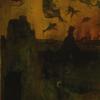
Posted
All online help and embedded help and tooltips doesn't get me to the meaning of the menu commands when I right click on a track header.
Would be handy if there was a quick button to completely clear a track.
-remove : whole track itself
- cut ?
- clear ?
Have tried the online help and the embedded help, but to no avail for me.
Sa., 21.10.2023 - 03:24 Permalink
Control b (b as in "blank") on a PC, or Command b on a Mac, will delete all figures from the selected instrument.
Is that what you were looking for?
Edit: I just double-checked, and it appears that the above procedure deletes figures from the selected instrument, but only within the selected container. Still pretty handy...I use it often.
Sa., 21.10.2023 - 08:54 Permalink
On Mac Command+ b delete only the last created figure not all!
Sa., 21.10.2023 - 09:47 Permalink
This command: cut also collapses the track header.
This is disturbing, because afterwards the trackheader has to be unfolded again by to place symbols again
Can the track header remain open?
I think Ctrl+ B in combination with Ctrl+ A works well.
First selection symbols with Ctrl+ A and then delete.
Never really thought much about emptying the track symbols, but now lately there is the need to always start with a clean track.
Sa., 21.10.2023 - 09:59 Permalink
Clear deletes the phrase (all parameters).
Cut does the same but copies it to the clipboard first.
Remove removes the instrument from the arrangement.
Sa., 21.10.2023 - 13:01 Permalink
Clear deletes the phrase (all parameters).
But it does that only for the currently selected container. Even if you make a multi selection of containers the "Clear" command deletes the phrase only from one container.
So, if you have phrases for that instrument in a lot of containers, it might be easier with these steps:
First create a new instrument track with the same sound (Command "New instrument with same sound"). Then delete the original instrument track with the phrases (Command "Remove").
This way you will end up with a new empty instrument track with the same sound as the original one.
Sa., 21.10.2023 - 14:26 Permalink
My situation was simpler : I was in the root container doing some figuring out with further sound assigning in the Vienna ensemble pro server.
Just some quick drawing on the empty track for testing.
Also important because the Albion One library offers instruments in the low,mid and high sound range and the chromatic parameter can set the range of the sound range.
Sa., 21.10.2023 - 16:12 Permalink
It is rare that you need to clear phrases in many containers at once. If you do, the method suggested by juergen works fine. If you have customized the instrument (playing ranges, controllers), make sure you copy these properties over to the new instrument before removing it.
Removing an instrument is a light-weight operation. It does not also remove associated rack modules.
Sa., 21.10.2023 - 20:44 Permalink
Using mouse for dragging area over the symbols to delete and use key Delete
Works fast
And Ctrl +B gives problem with shrinking of trackheader too small and track becomes not accesible anymore
Sa., 21.10.2023 - 21:21 Permalink
too narrow collapsing trackheader by Ctrl +B
Sa., 21.10.2023 - 22:04 Permalink
On Mac Command+ b delete only the last created figure not all!
When I use Command+b, ALL symbols are erased from the selected instrument within the selected container.
And Ctrl +B gives problem with shrinking of trackheader too small and track becomes not accesible anymore
Yes, the track collapses (I wish it didn't.), but a double-click on the arrow at the right side of the instrument's header expands it once again. No big deal IMO. Anyway, I find it a handy function, but YMMV.
Sa., 21.10.2023 - 23:47 Permalink
Yes, the track collapses (I wish it didn't.), but a double-click on the arrow at the right side of the instrument's header expands it once again. No big deal IMO. Anyway, I find it a handy function, but YMMV.
If you look closely at the animation it is quite clear that it is not functional like this
So., 22.10.2023 - 03:49 Permalink
Only you can decide what works for you and what doesn't.
But if you double-click at the far right of the track header of the collapsed track, it will expand.
EDIT: A double-click ANYWHERE in the collapsed track header will expand it.
So., 22.10.2023 - 10:44 Permalink
Figure is important but not the only parameter. Command-B ensures all parameters are cleared.
So., 22.10.2023 - 16:27 Permalink
Thanks for the clarification. I'm usually so focused on figures that I hadn't noticed that.





